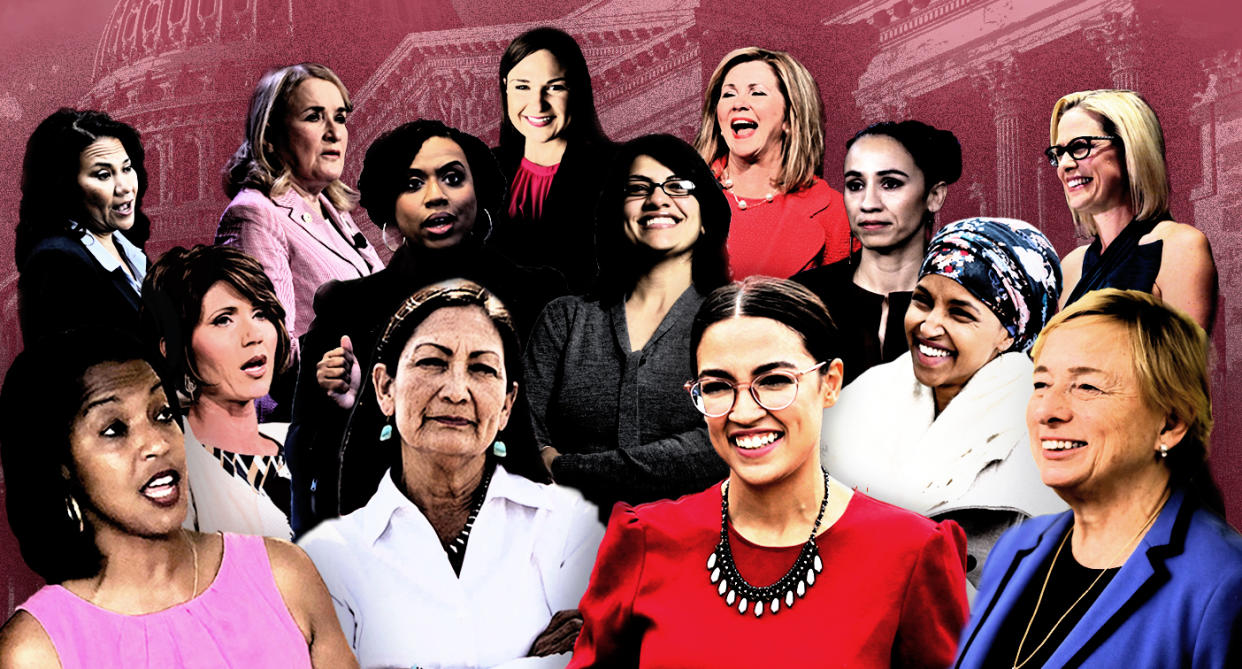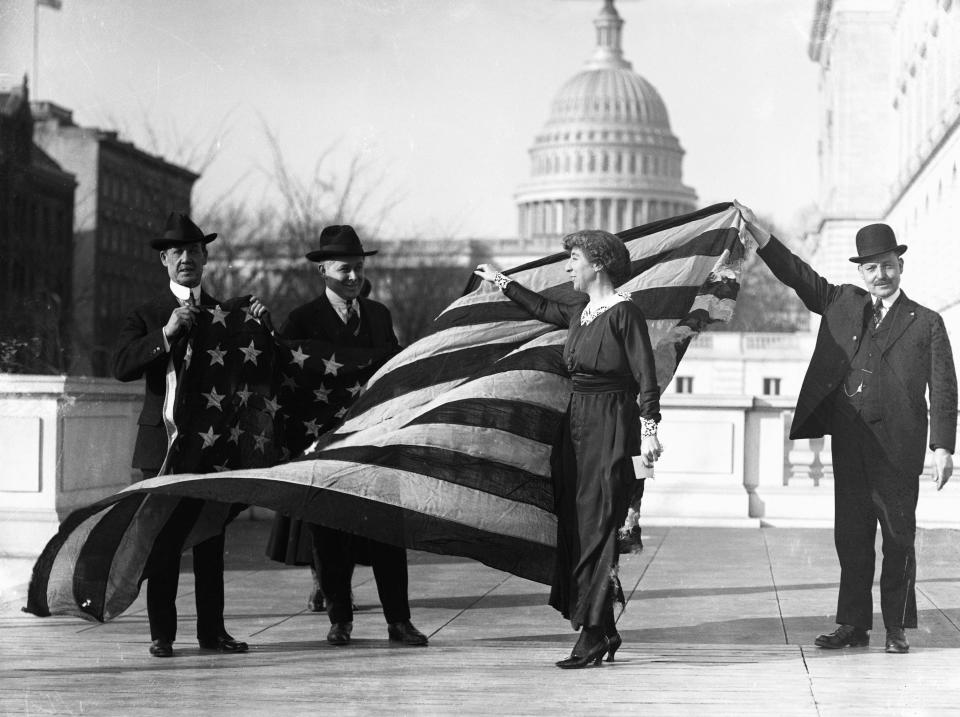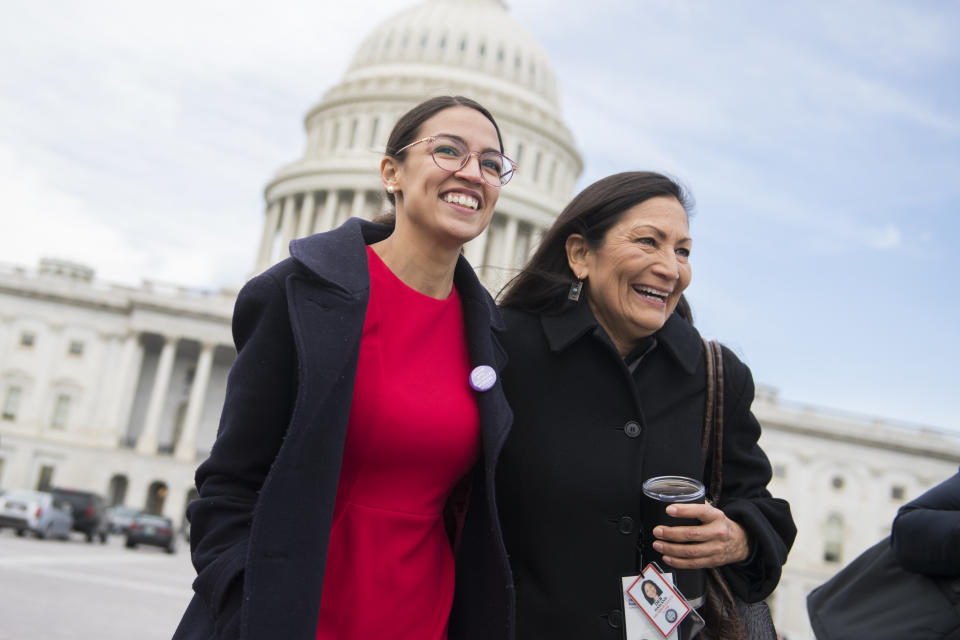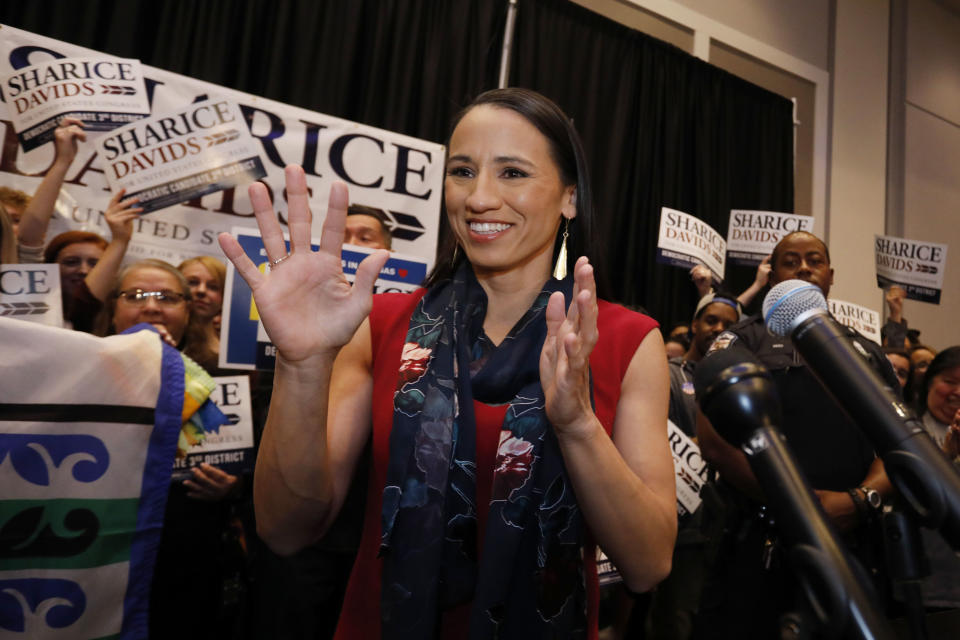Diversity triumphed in midterms, even as the power of identity politics waned

It was an election of firsts for the U.S. Congress: the first Native American women, the first Muslim women, the first women senators from Tennessee and Arizona. The first woman to represent Iowa, the first African-American to represent Colorado, the first Latinas to represent Texas, the first gay person to represent Kansas and the first black women to represent Massachusetts and Connecticut in the U.S. House of Representatives. The first female governors of Maine and South Dakota. The largest number of women and minorities and LGBTQ candidates to run at one time in American history, and the greatest number elected to serve.
What is more striking even than all of those firsts is how few of them based their campaigns on belonging to a previously marginalized group.
“They were not saying ‘Vote for me because I am an immigrant,’” said Sayu Bhojwani, of the 54 candidates on state and local ballots on Election Day who were first-generation immigrants.
“Instead,” says Bhojwani, author of “People Like Us: The New Wave of Candidates Knocking at Democracy’s Door” and the founder and president of New American Leaders, which prepares first- and second-generation immigrants to run for office, “they were saying ‘Because I have this set of experiences, I will be a strong advocate for you in Congress.’”
It’s a subtle but important difference, says Kelly Dittmar, an assistant research professor at the Center for American Women and Politics at Rutgers University. While never a straight line, she says, the path for most underrepresented groups in politics generally goes from seeking the job in spite of being different to seeking the job because you are different to simply seeking the job.

Women’s earliest political campaigns, for instance, were like those of Jeannette Rankin of Montana, the first woman elected to Congress, in 1917. Despite being an ardent suffragette and pacifist, she was also determined to be one of the guys. “I’m no lady, I’m a member of Congress,” she would respond when colleagues referred to her as “the lady from Montana.” Fifty-five years later, Patricia Schroeder became the first woman from Colorado in Congress with the slogan “She Wins. We Win.” — chosen, she said back in 1972, because “we wanted to make sure they knew I was a female.” And this year, while the website for gubernatorial candidate Janet Mills noted briefly that she had been “the first and only woman” to serve as the attorney general in Maine, it did not mention anywhere that, if elected, she would be that state’s first female governor.
So-called identity politics — basing your pitch to voters on your gender, race, ethnicity or sexual preference — has long been controversial, with Republicans accusing Democrats of valuing diversity over experience, while Democrats charge Republicans with valuing a white male status quo above all else.
This year both sides arguably ran identity-based campaigns. The reason so many women and members of other underrepresented groups ran in the first place was anger at feeling ignored, injured or insulted by the Trump administration, so their campaigns played out against that backdrop. At the same time, Trump supporters are older, whiter and more male than the nation as a whole, and candidates seeking their votes tended to play to those identities.
Of most interest to those who study and strategize campaigns, however, was that so many of these identity appeals were indirect and oblique.
“We’ve moved beyond ‘You should vote for me because I will be the first…,’” Dittmar said.
“Now it’s expressed as ‘Here is my life experience, the life experience of a black woman or a transgender woman, and that’s the perspective and experience I would bring to the job.’”

That is the message that underrepresented candidates are being advised to give. “What we teach the candidates that we train and support is that being LGBT is not why you’re running, but it is part of who you are,” says Annise Parker, who became the second woman mayor of Houston and the one of the few openly gay mayors of a large U.S. city when she served from 2010 to 2016. Now CEO and president of the Gay and Lesbian Victory Fund and Leadership Institute, which endorsed 272 LGBT candidates across the country in the midterms, 160 of whom won their races, Parker stresses that “You present it as a part of your résumé, one piece of what you have to offer.”
Which is what 29-year-old Alexandra Ocasio-Cortez was trying to convey when she launched her campaign by saying “Women like me aren’t supposed to run for office,” and eventually won her bid, becoming the youngest member of the incoming Congress. It’s what former MMA fighter Sharice Davids was signaling when she ran a video of herself working out against a punching bag, promising to “continue fighting for everyone who’s ever been left out or left behind.” While owning her identity as a lesbian and Native American, she avoided pointing out that this would make her the first of either group to represent Kansas in Congress.” Her Third Congressional District, comprising Kansas City and its suburbs, is over 80 percent white and less than 1 percent Native American. Similarly, Deb Haaland opened her speeches by saying “My name is Deb Haaland and Congress has never heard a voice like mine,” and successfully campaigned to become the first Native American to represent New Mexico, a state that is roughly 10 percent Native American.
In part candidates take this approach because they don’t want to be elected merely because “We check a box,” Haaland said in an interview with Yahoo News. “It’s not like I just popped up and decided I’ll run in order to be the first Native American woman. I’ve been working in politics and policy long and hard and I have a lot to contribute.”

And in part it is because voters fill in what candidates don’t need to say directly. “It’s something that the voters are thinking about, particularly over the past two years,” says Christina Bejarano, associate professor of political science at the University of Kansas and author of “The Latina Advantage,” a book about the growing political strength of Latina candidates.
“Diverse candidates do not prioritize running solely on their identity,” she said. “But when they talk about their experiences, their backgrounds, voters fill in the lines and understand that this reflects their identity and they will bring those experiences with them into office.”
Adds Haaland: “There are certain groups of folks that have never had a voice in politics. I didn’t campaign directly on that. But it was something that we wanted people to know about our campaign. And people did.”
_____
Read more from Yahoo News:
Trump asks why Mueller hasn’t interviewed ‘hundreds’ of campaign staffers
George Conway: Republican Party has become a ‘personality cult’ under Trump
Trump administration defends asylum crackdown after judge’s ruling
An American killing: Why did the U.S. Park Police fatally shoot Bijan Ghaisar?
Cory Booker: I will ‘take some time over the coming months’ to consider 2020 bid


